An Interesting Day at the Imposing Mehrangarh Fort, Jodhpur, Rajasthan || A Grand and Stately Fort with Several Legends and Mysteries that make it even more interesting
Whenever I am at the threshold of an imposing fort, especially one as high as the Golconda, the first thought is. I don't think I can make it to the highest terrace. However, so far, I have always been able to reach the highest point.
Mehrangarh fort, Jodhpur, is one of the most imposing forts I have seen till date. It even has a lift at the ground level to take tourists up to the central courtyard, without which many people would not be able to explore the fort and would have to return from the entrance.
From the gate, to reach the central courtyard of the fort, one needs to scale a steep incline and that discourages many people from proceeding further on foot. While we were coming back from the fort, several people, mostly those accompanying senior citizens, asked us how much further up they would have to go to reach flat ground. We gave our honest opinion and many of them turned back to take the lift.
Another artefact of note at the entrance of the Mehrangarh fort is the stone with 31 carved handprints. These are said to be the handprints of wives and mistresses of Maharaja Man Singh who died in 1843. This led to his widows and concubines following him into his burning pyre. The sight of this stone sends shivers down my spine. World was such a different place back then.
Even apart from this stone, the fort has a very grisly history. Consider its foundations for example. So when Maharaja Rao Jodha decided to move the capital from Mandore to Jodhpur, he identified this hilly site for his fort. However, a hermit who went by the name of Cheeria Nathji lived here. When requested to shift his abode, he refused.
When everything else failed, the Maharaja sought the help of Karni Mata and that worked (!!). The hermit agreed to move, but before he did that he placed a curse of Jodhpur that it will always suffer from scarcity of water.
To dampen the impact of the curse, a sacrifice had to be made. One citizen, Rajaram Meghwal came forward to offer himself as a sacrifice on one condition that his family be taken care of till eternity. He was then buried alive in the foundation. Today there is a plaque on the wall of the fort to commemorate the sacrifice of Rajaram Meghwal. And to this day, his descendents are supported by the Rathore Trust.
If the idea of a man being buried alive does not disturb you, I don't know what will. And the gore doesn't end there. Later, Maharaja Rao Ganga, allegedly under the influence of opium, slipped off a parapet and fell to his death in the fort at the age of 41 in the year 1537. Some historians say that his own ambitious son Maldeo pushed him, but there is no evidence to suggest that. However, the Rathore house reached its pinnacle of glory under the rule of Maldeo.
Then there was the matter of Maharaja Ajit Singh who was actually murdered by his own son Abhai Singh who felt that because of the less than warm equation that Ajit Singh shared with the Mughal Emperor, the emperor would soon plan to annex Jodhpur. So he had his father assassinated. At the time of his death in 1724, Ajit Singh was only 44 years old.
There are also reports of Maharaja Man Singh (1783-1843) killing off his prime minister and those of Maharaja Jaswant Singh II (1838-1895) throwing off his concubine from the window when alarmed by the sudden arrival of his father. However, there are no trusted sources to verify these legends.
Coming back to the present day state of things at the fort, at the face of it, the structure is holding up really well. The magnificent fort has walls that look really sturdy and buildings that show minimal wear and tear. The fort is also being looked after really well.
While we were there, there were some really interesting dance performances that we enjoyed. We spent good amount of time just sitting around in the courtyard watching dancers and people, and enjoying the performances. There was something unhurried about this day and we spent quite some time just taking it easy and enjoying the sights.
Mehrangarh derives its name from "Mihir", which means the Sun, which was the chief deity of the Rathore clan. The fort itself, though started by Maharaja Rao Jodha, was in continuous state of development with each new Maharaja adding more sections to it. And therefore, you will find the signs of various styles of architecture as they gained and lost popularity over the centuries.
While the fort was first built during the reign of Maharaja Rao Jodha (starting from year 1459), much of the fort as it stands today actually came up during the reign of Maharaja Jaswant Singh (1638-1678). The fort is spread across a hill over an area of 5 kilometers.
The entry to the fort is through seven gates - the first one of which is the Jai Pol, built by Maharaja Man Singh after his victory over Jaipur in 1806. Fateh Pol was built after a victory over the Mughals in 1707. Then there are the Gopal Pol, Dedh Kangra Pol, and Amruti Pol. Then comes the Loha Pol, where you will find the Sati handprints. And the last one is the Suraj Pol, which provides you access to the Palace Complex and Daulat Khana Chowk.
Once you cross all the pols, all the while climbing up a steep incline, you will come to the complex that houses several palaces. Each of these palaces has a unique decor and feel to it. You walk from palace to palace and admire the craft and the opulence and also the vision of the rulers of those times.
It is even more commendable considering that many of them didn't live up to their mid 40s and were constantly engaged in hostilities and battles with the Mughals, the other rulers, and diplomacy with the British. For them to then focus on the welfare of their people and also bring about social reforms is almost magical.
There are the Moti Mahal, the Phool Mahal, the Sheesha Mahal, the Sileh Khana, and the Daulat Khana. This also seems to be the pattern. In almost all the forts and palaces you visit, you will find a Moti Mahal or a Phool Mahal, and definitely a Sheesha Mahal.
Despite all this opulence inside, what actually is the most beautiful is the stark rock structure that stands amid all the natural vegetation, on the top of a hill, against a clear blue sky. If you had all this to make your day beautiful, I wonder why you would surround yourselves with Jewels and Pearls.
These tall, towering walls, gates, and arches, make you feel rather small and also give you a new respect for people who were able to bring it all together despite the absence of modern-day machinery, relying solely on human resiliency and creativity and animal power.
The Mehrangarh fort currently has many royal items on display. You can find fancy palanquins that were used by the royal ladies and at times royal guests and male members as well to travel from one place to the other.
You can also find elephant howdahs, which are basically two compartment seats to be used to ride an elephant. These howdahs are obviously intricately carved and covered in silver and gold sheets. These too were meant for Kings or Royals to travel, with a seat for a mahaut as well.
The Daulat Khana is a museum that displays some of the best-preserved and most important examples of the fine art prevalent during the Mughal Period. Apart from the Daulat Khana, there are also some galleries that display some of the finest examples of paintings from the Marwar region of Rajasthan.
There is an impressive gallery of armory which has weapons from various periods of the history of Jodhpur. There are sword hilts that are studded with Jade, Rubies, Emeralds etc. And there are guns with barrels adorned with gold and silver plating. Also on display is Maharaja Rao Jodha's khanda (a wide and straight sword), which weighs around 3 kgs. It also houses Samrat Akbar's sword and also that of Timur.
There is also a turban gallery that houses various types of turbans that are worn by the men from various regions of Rajasthan. Overall the fort has a fascinating collection of artefacts on display. And the various palaces themselves are works of art.
Apart from all the palaces there is also a Chamunda Mata temple within the premises of the fort. It receives thousands of visitors every year. In fact in the year 2008, there was a massive stampede in this temple, in which more than 250 people lost their lives. Unfortunate!
There is also a terrace that overlooks the blue city with a wall that has several cannons jutting out toward the city. It is quite an imposing sight and one can imagine the feelings such a grand fort would evoke in armies who chose to attack the fort. They would have felt overwhelmed, anxious, and also a desperation to conquer such a fort.
As I mentioned, the fort is grand and in a good shape. Once you have climbed all the way up to Daulat Chowk, you can roam around at leisure and spend the entire day there. There is also a restaurant, which is at the expensive side, where you can have a meal in case for some reason you were not able to pack sandwiches for yourself.
Overall, it is an amazing fort with quite a few secrets, rumors, and legends that make it even more interesting. In fact, it is one of my favorite forts in India.
Related Blogposts -
 Discovering ancient history in Akal Wood Fossil Park, Jaisalmer, Rajasthan || A most unusual place full of surprises that are not all related to the bygone eras
Discovering ancient history in Akal Wood Fossil Park, Jaisalmer, Rajasthan || A most unusual place full of surprises that are not all related to the bygone eras >> The Amazing Pokaran Fort near Jaisalmer, Rajasthan || A beautiful structure that effortlessly blends with the desert landscape it is built in
>> The Amazing Pokaran Fort near Jaisalmer, Rajasthan || A beautiful structure that effortlessly blends with the desert landscape it is built in >> A short but rewarding visit to the Khichan Bird Sanctuary || How the local population of a place has made this town a safe haven for the Demoiselle cranes
>> A short but rewarding visit to the Khichan Bird Sanctuary || How the local population of a place has made this town a safe haven for the Demoiselle cranes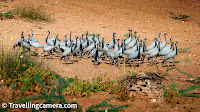 >> Demoiselle cranes of Khichan, Jodhpur District, Rajasthan || Beautiful Birds that fly to and fro Mangolia and have found a mention in Indian mythological texts
>> Demoiselle cranes of Khichan, Jodhpur District, Rajasthan || Beautiful Birds that fly to and fro Mangolia and have found a mention in Indian mythological texts  >> Driving around the drivable parts of Bikaner, Rajasthan || Wide, clean roads with easy, laidback traffic
>> Driving around the drivable parts of Bikaner, Rajasthan || Wide, clean roads with easy, laidback traffic >> The surprising Bap Village, Jodhpur District, Rajasthan || A place to stop and stretch your legs walk around a large waterbody
>> The surprising Bap Village, Jodhpur District, Rajasthan || A place to stop and stretch your legs walk around a large waterbody >> Intricately carved Rampuria Havelis in Old Bikaner, Rajasthan || A symbol of the wealth and luxurious lifestyles of the rich Rampuria merchants since the 15th Century
>> Intricately carved Rampuria Havelis in Old Bikaner, Rajasthan || A symbol of the wealth and luxurious lifestyles of the rich Rampuria merchants since the 15th Century >> Danke ki Chot, Bikaner, Rajasthan || The perfect place for authentic, tasty, reasonable vegetarian Rajasthani food
>> Danke ki Chot, Bikaner, Rajasthan || The perfect place for authentic, tasty, reasonable vegetarian Rajasthani food




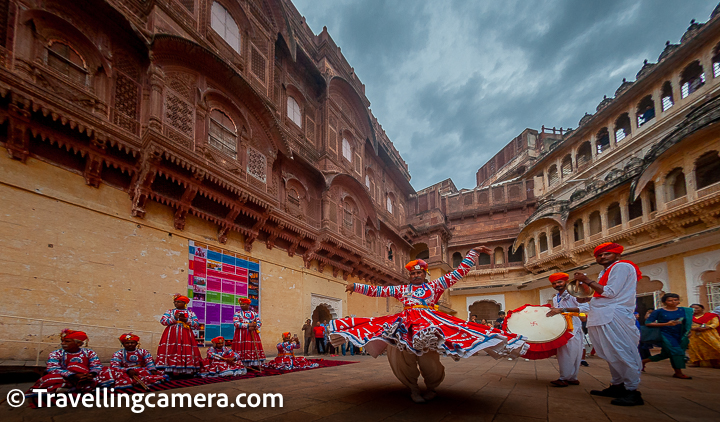
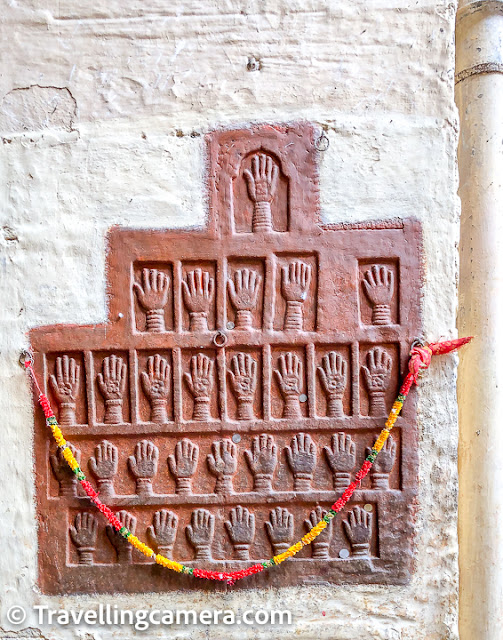


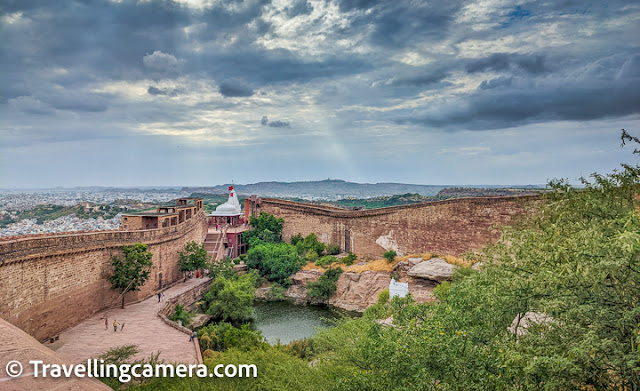



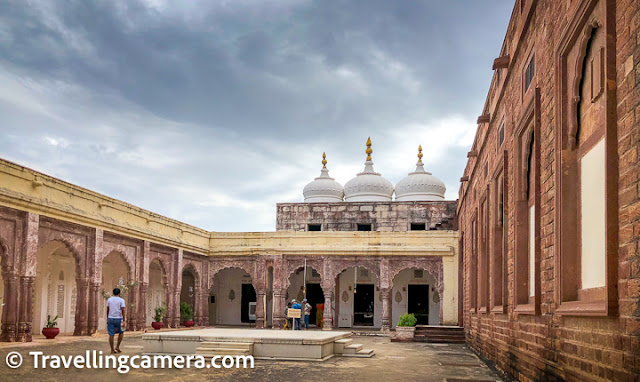


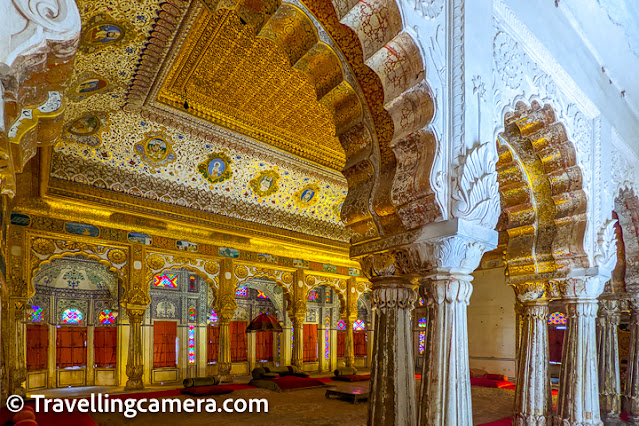


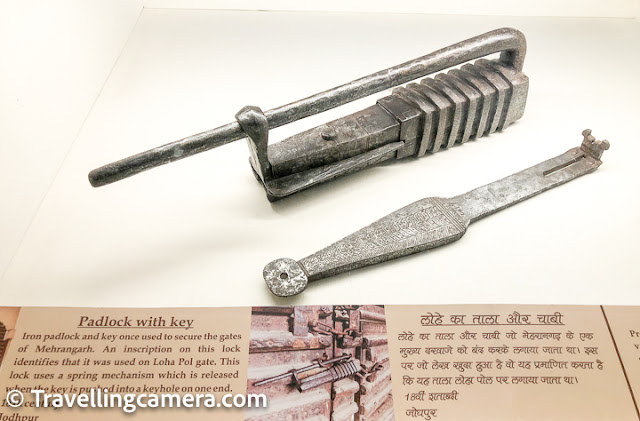
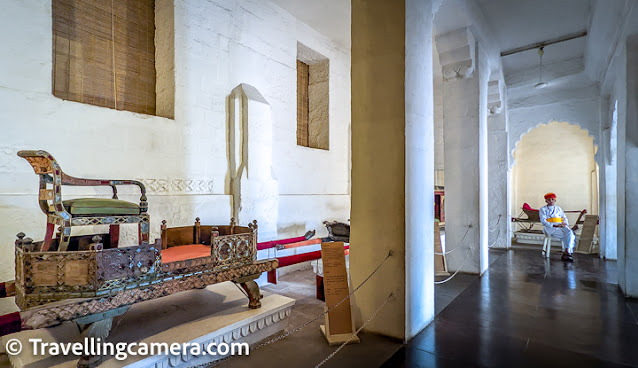



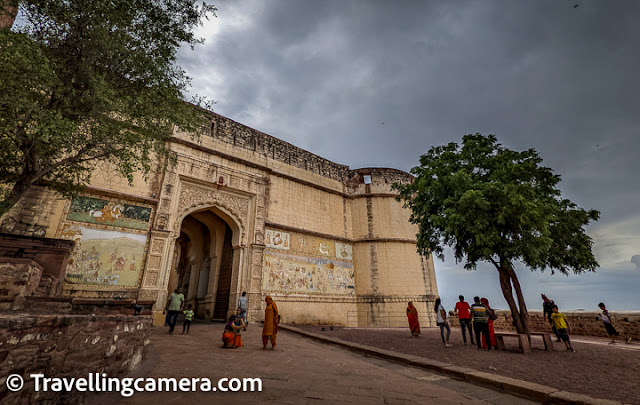


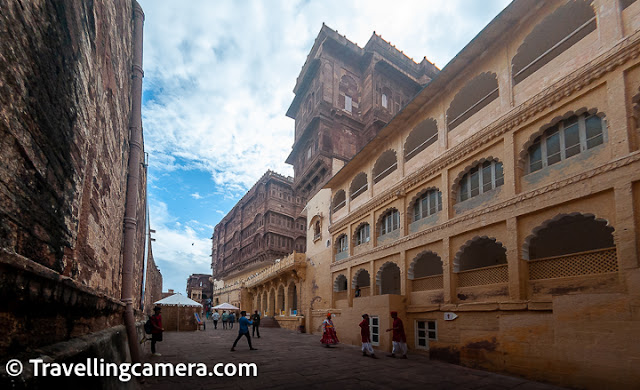
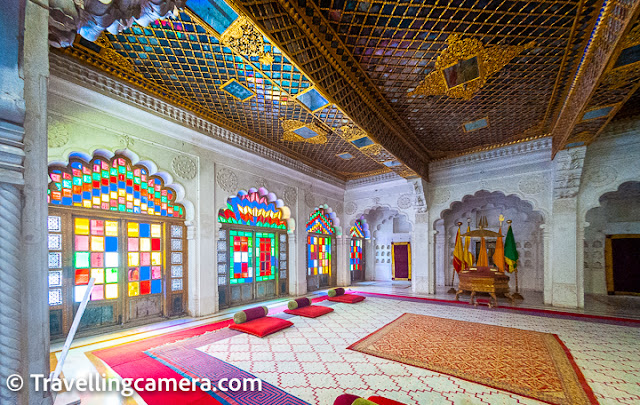
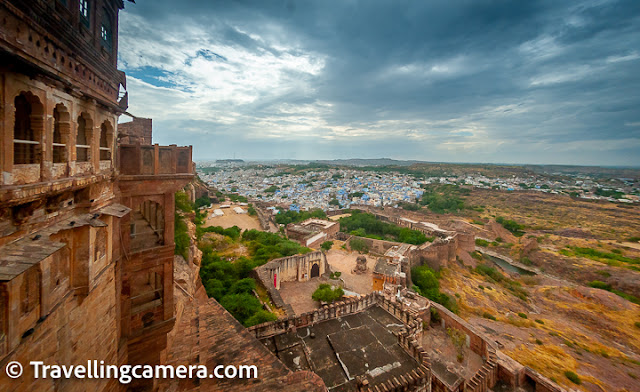


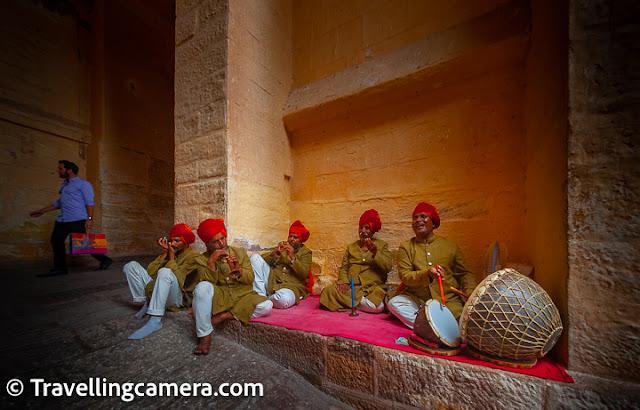

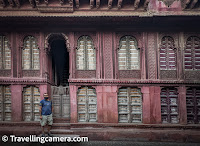

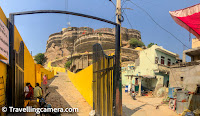


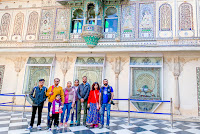



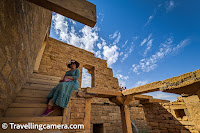



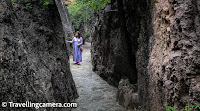


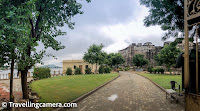
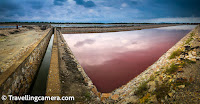

.jpg)
Comments